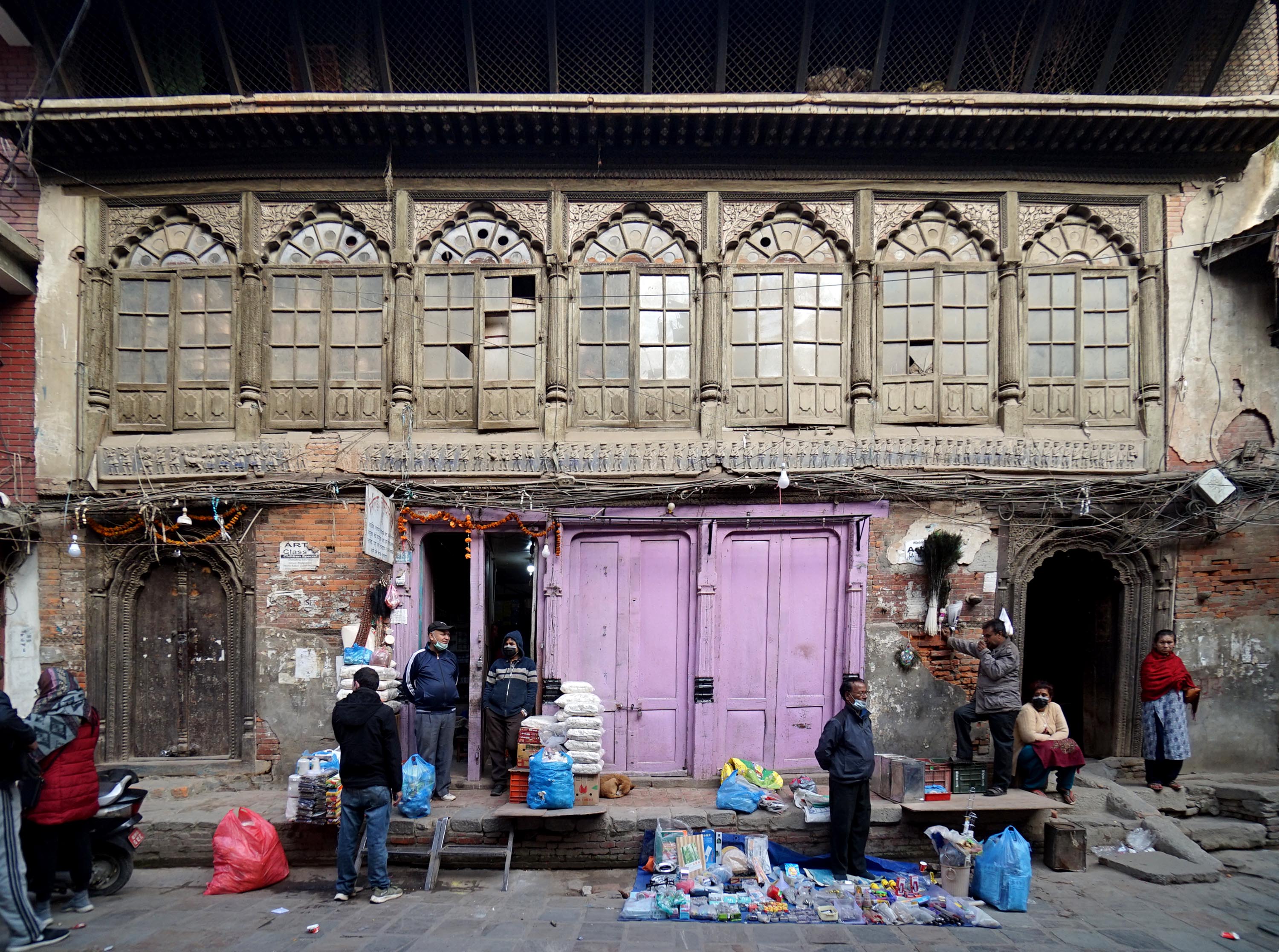Palṭana Ghara, Kathmandu

Palṭana Ghara (lit. platoon house), is said to be the first private building in the Valley with glass window panes. The façade is decorated with a clay relief featuring a line of marching soldiers with guns resting on their shoulders. The building owes its popular name "platoon house" to this relief.
The symmetrical facade features a three-bay opening in the centre and is flanked by two doors on each side. It is likely that the central opening had the same carved wooden arches that survive on the side doors but might have been removed to fit the new doors for the shops. The relief of marching soldiers covers the entire width of the building. Similar figures of armed soldiers, carved on a timber cornice, have been documented at the Gārada Ghara in Nuwakot.
Pillars divide the first floor of the house is into seven bays. The design of the pillars has its precedent in the 18th century palaces of Gorkha and Nuwakot. Each bay is closed off by a window consisting of two shutters; each dived into six glass panes. Carved wooden panels that depict foliage frame the circular arch above the windows. Such unique window designs are extremely rare in the Kathmandu Valley. Similar windows survive in a private house in Kva Hiti, Kathmandu and are documented in a painting of the Basantapur Palace by Ambrose Oldfield (ca. 1850-1863 CE).
The Platoon House has been the source of much speculation and interesting oral historical accounts. The site and an older house originally belonged to Bhājudeva Brāhmaṇa, the priest of Jayaprakāśa Malla, the last Malla king of Kathmandu. Following the Gorkhalis' conquest of the Kathmandu Valley, the second Śāha king Pratāpa Siṃha gave the house and surrounding land to Abhimāna Siṃha Basnyāta as a land grant. Abhimāna Siṃha Basnyāta was a prominent noble in the court of King Pṛthvī Nārāyaṇa Śāha and contributed to the consolidation of the Gorkha kingdom. He is said to have begun the construction of the Palṭana House three days after the ownership of the land was transferred to him. An inscription, formerly installed at Nārāyaṇa Cuka, the courtyard behind Palṭana Ghara, which is now lost, states that the building was completed on January 10, 1777 CE (Śaka Era 1698). The inscription further records Palṭana Ghara to be "a building with the protection of a line of tilaṅgās (army men) and rich in honor and wealth”.
The building is currently rented to a number of businesses that use the ground floor for shops and the upstairs for storage. Tilaṅgā Āyurvedālaya, an Ayurveda pharmacy, operates from one bay on the ground floor. The Vaidya family who runs the pharmacy claims that their ancestor, the Royal Vaidya (Ayurveda physician) opened the pharmacy at the request of King Pratāpa Siṃha Śāha.
When the Basnyāta clan tried to sell the building in 1961 CE, the pharmacy's owner filed a complaint with the palace and the sale was averted. The Palṭana Ghara has survived in almost original condition without any major alterations except for the modified roof. However, its dilapidated condition urgently requires repairs.
For more information about Paltana Ghar, please visit DANAM.
